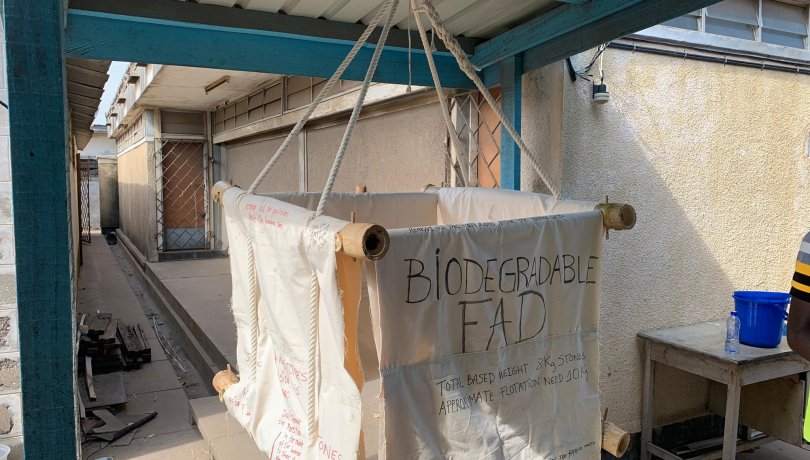Researchers at the Institut de Ciències del Mar (ICM) of Barcelona have designed a biodegradable device for tuna fishing that could eventually replace the plastic devices currently used for this aim. The initiative is part of a project carried out in collaboration with the International Seafood Sustainability Foundation (ISSF) that seeks to make fishing practices more sustainable.

Every second more than 200 kilos of plastic are dumped into the ocean. Once there, plastic travels through the ocean currents and ends up concentrating on the major ocean gyres. Most come from land, although a significant part enters the sea directly from it due to maritime activity.
A clear example of this are the Fish Aggregating Devices or FADs, devices used to lure and concentrate fish. FADs are floating structures generally made of plastic by-products. They are the best ally of tuna fishermen, since, although it is not well known why, tunas are very attracted to these structures and when they see them they place themselves around looking for the shade they generate. In total, more than 40 percent of annual global tuna catch is caught using FADs.
The problem lies in the fact that FADs are left adrift and end up lost in the ocean, which contributes to its contamination. For this reason, now, a group of experts in ocean currents from the Department of Physical Oceanography of the Institut de Ciències del Mar (ICM) of Barcelona has designed a biodegradable FAD prototype made of cotton, bamboo and stones.
All this is framed in a project that ICM conducts in collaboration with the International Seafood Sustainability Foundation (ISSF). The initiative seeks to better understand how FADs move into the water column in order to design new prototypes built with less plastic derivatives, less bulky and heavy and just as efficient as those currently used.
The details of the new prototype are collected in a report presented last May during the fifth meeting of the Inter American Tropical Tuna Commission (IATTC). In this work, the researchers explain the physics behind the displacement of FADs in the ocean. Their arguments are based on the movements of the drifting buoys, since these devices for fishing tunas are a kind of substitutes for these buoys but with a tail, which makes them move more slowly.
The prototype proposed by ICM experts has a cubic shape, which makes its drag coefficient, that is, the capacity that a structure has to follow a moving fluid, quite high compared to that of other geometric shapes. As a result, this structure should be able to stay within the current, acquiring a much slower travel speed.
Furthermore, the new prototype is built with materials that are easy to find and has a useful life of about a year, while FADs made of plastic derivatives take hundreds of years to decompose.
Some similar biodegradable structures have already been tested in the Pacific Ocean, although the prototype proposed by ICM researchers, which was presented last December to a group of fishermen in Ghana, has not yet been tested in the sea.
Researchers hope to be able to test this biodegradable device very soon to check its effectiveness, since being able to use it would broadly contribute to minimize the impacts of fishing activity in the ocean. All this proves that working together, industry and science can help guarantee the sustainability of natural resources in the long term through better exploitation practices based on better scientific knowledge.
